History
The initial goal was to amplify guitars so that they could be heard satisfactorily in noisier environments. For this purpose, simple pickups were incorporated into guitars, ensuring they would sound at a satisfactory volume even in a large ensemble. The idea was to preserve their sound, but this was just the beginning.
In the 1950s, pioneers like Leo Fender and Lester Polfuss (known as Les Paul) placed pickups and strings on a piece of wood, giving life to the electric guitar. Initially, the Fender Broadcaster, later renamed the famous Telecaster, quickly became a successful electric guitar. Fender’s Stratocaster model followed, and Gibson introduced the equally iconic Les Paul. The quest remained for a powerful yet clear sound. This led Gibson to temporarily discontinue the Les Paul in 1960. Their guitars, equipped with low-noise PAF humbucker pickups, didn’t have as much clarity and distorted the amplifiers quickly.
When the Beatles made their appearance, they used VOX amplifiers that produced a wonderful, clean sound, especially in harmony with their semi-acoustic guitars like Rickenbacker, Gretsch, and Epiphone. Since sophisticated PA sound systems with consoles, etc. (only voice installations at that time) were not prevalent, amplifiers had to operate at higher volume levels, especially in large concert venues. Initially, undesirable distortions and feedback were observed in the sound. However, some musicians saw potential in these distortions. Amplifiers were pushed to the maximum, mercilessly overdriving their power stages. Technicians began to accept what they had previously avoided: distortion. Famous examples include the riff in Keith Richards’ “Satisfaction” and Paul McCartney’s Fuzz Bass in “Think For Yourself” (LP: Rubber Soul). In both cases, a Maestro Fuzz was possibly used. The sounds of ’60s fuzz are quite distinctive, but one of the best-known examples in this realm came from Eric Clapton. During the recording of the legendary Bluesbreaker album, he used a Gibson Les Paul Sunburst (’58 or ’59 with PAF humbuckers) and a Marshall Combo 50-watt amplifier. Since there was no Master Volume, Eric turned all the knobs to the max (the “usual hand move”). The sound engineer, seemingly panicked, had to place the microphone at a considerable distance. The result? One of the fullest, smokiest, and, in our opinion, most beautiful sounds of all time.
Other guitarists like Jeff Beck and Jimmy Page, successors to Clapton in the Yardbirds, used Soul Benders to boost their VOX AC30s. Jimi Hendrix used the Maestro Fuzz Face and a VOX WAH WAH. At that time, there weren’t many other effects available, mostly tape echoes like the Echoplex or WEM Copycat. Hendrix also had some more complex gadgets like the Univibe (a type of artificial Leslie) and the Octaver.
Important: Previous distortions typically caused an interesting sound in an already overdriven amplifier. It is a completely different sonic result from using distortion on a clean amplifier. The rock sound, as we know and love it, was essentially complete. Of course, the majority of those involved with the guitar and its sound strive to reproduce those beautiful vintage sounds and enhance them a bit. To be honest, there hasn’t been much truly new material.
In the ’70s, the Master Volume was developed – central volume control on amplifiers. This allowed warm tube tones to be achieved at lower volume levels, creating distortions in the preamp, while another potentiometer controls the overall volume. The type of distortion was slightly different (many contemporary guitarists still prefer it), but these amplifiers sounded better. Phaser pedals that appeared as effects pedals were later upgraded by flangers and chorus. The punk movement, besides its invigorating playing style, didn’t bring many new things.
The real revolution came from a young guitarist – Eddie Van Halen. He breathed new life into old blues melodies, using fast legato playing, employing chromatic scales, and, of course, extensive use of the tremolo. His sound philosophy dominated for years. STRAT-type bodies with a bridge pickup and a volume potentiometer, combined with tremolo systems like Floyd Rose or Kahler, amplified through a MARSHALL or similar amplifier, became the standard.
In the ’80s, sound enthusiasts like Steve Lukather created massive rack systems where various preamps and amplifiers sent their signals through numerous high-quality studio effects, which didn’t always sound as expensive as their price tags suggested. Due to the multiple stages the signals passed through, the “sound” often got lost.
In the ’90s, things change completely. The philosophy: take a guitar, plug it into an amplifier, and start playing. What definitely remains is the tendency to use more “natural” sounds. In many cases, a harmonically balanced crunch sound is sought, which, ten years ago, would have passed simply as a clean sound. The tremolo bar, so inevitable in the ’80s, no longer plays such a prominent role. Many former avid users completely ignore it now (e.g., Paul Gilbert). Nowadays, there are all these and many more… From tube amplifiers with a single channel without a master volume to amp simulation that supposedly offers all the classic sounds at the push of a button.
Transistors vs Tubes
For years, transistors in guitar amplifiers were considered cheap and inferior imitations of the good old tube technology. However, transistor amplifiers have managed to gain significant ground. Thanks to advanced circuits, transistor amplifiers are now widely used. In contrast to the general trend where tube technology has almost disappeared from electronic devices, old-school tube amplifiers still hold a high position. There are now very few manufacturers who continue to produce tube amplifiers. Tubes are much more expensive than transistors or semiconductor chips and are much more susceptible to faults. What, however, makes tube amplifiers so distinctive?
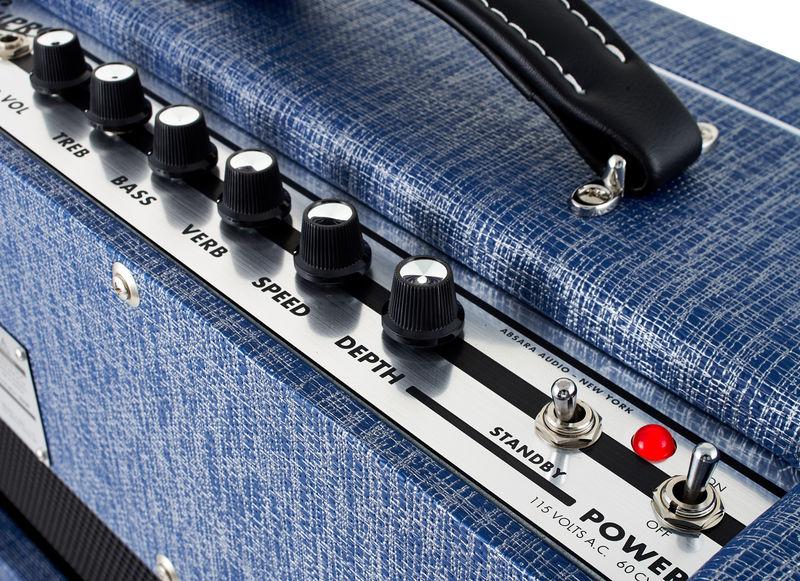
Summary – Sound! Unlike HiFi technology, a guitar amplifier is meant to alter the sound of the signal. The distortion effect, which is undesirable in Hi-Fi sound, creates the characteristic sound in a guitar amplifier. Tubes behave differently from cold transistors precisely at this point. Due to the simple circuit, tubes respond more quickly to the signal. Tubes operate at much higher voltages. Another advantage is that due to their straightforward construction, tube amplifiers have double the power compared to a transistor.
Most guitarists see the guitar amplifier as a separate instrument. The classic rock sound is created both in a tube preamp and in the power amp, interacting with the speakers (where distortions also occur). The physical effect is that high signal levels are sent to the speaker coil, and the distortion level is electromagnetically influenced by the movement of the speaker cone. Since the speaker converts only a limited part into acoustic energy, some of this energy returns to the power amp, causing distortion. Distortion in the power amp happens only at a specific stage.
For the classic metal sound, the signal concentration is more on the preamp distortion. The signal is compressed more here, and the power amp, with more headroom, produces the defining sound.
Some manufacturers have started producing hybrid amplifiers to incorporate a tube circuit in the preamp while using a transistor amplifier in the final output to bring the distorted sound to the desired level of the power amp. Others simulate the tube sound with DSP circuits. The results today are impressive—often, a digital sound is indistinguishable from an analog one. Moreover, this technology allows for simulating various “tube amplifier types.” Thus, when you buy a good amplifier, you have a choice of different “tube amplifiers” and their sound characteristics.
In the more affordable category, transistor amplifiers dominate the market today. They provide decent results and, considering their price, offer an excellent balance between quality and cost.
Amplifiers: Combo vs. Stack
Since the 1950s, there have been two main types of guitar amplifiers. Firstly, there’s the combination of a head and a speaker cabinet (known since the 1970s as a “stack”). The other type is the “combo,” where the amplifier’s electronic circuitry is integrated into the same cabinet as the speaker. Most manufacturers produce both variations.
Amplifiers, especially tube amps, have quite heavy components. Cabinets are not very lightweight either. In a stack, you’ll find one, two, or even four 10″ or 12″ speakers installed. With combo amplifiers, you typically use a pair of 2×12″ speakers, while in most stacks, cabinets with 4 speakers of 10″ or even 4 speakers of 12″ can be encountered. You might have seen photos of Jimmy Page or Eddie Van Halen on stage with a Marshall stack featuring two 4×12″ cabinets in the background.
But it’s not just about volume when it comes to a stack (some combos can be incredibly powerful too), but also about the volume of air being moved, something only a 4×12″ cabinet can achieve. The combined use of a head with a cabinet offers another advantage. You can mix different types of cabinets (2×12″/4×10″/closed back/open back) or even use models from different manufacturers that might have a better sound.It’s simply more flexible in terms of sound and gives you more options.
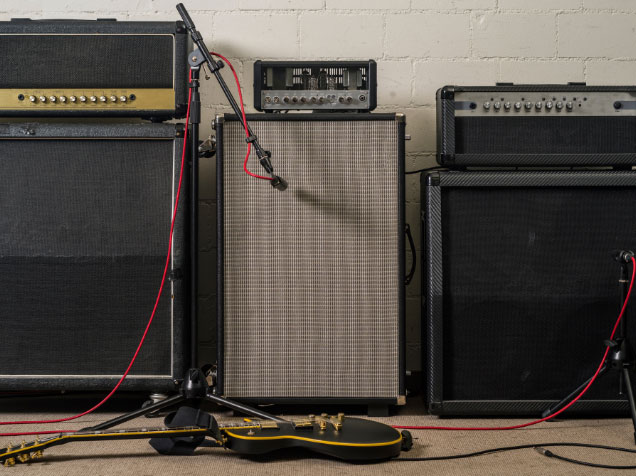
Of course, combos, on the other hand, have their advantages as well. One of these is better portability, although many tube combos can still be quite heavy. Combos also set up more quickly since you don’t need to deal with wiring between the amp and the cabinet. Depending on the music genre (e.g., jazz) or the venue (smaller clubs, etc.), a small combo can be more than sufficient. Finally, the price can also be a determining factor as combo amplifiers tend to be more affordable usually.
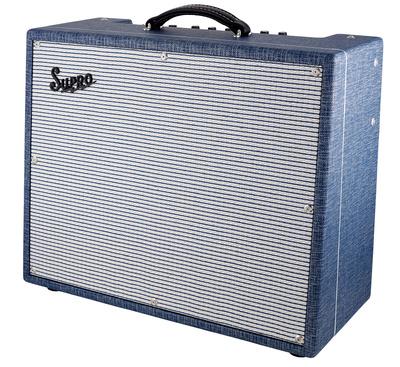
At this point, it should be mentioned that for amplifying the sound of acoustic instruments such as the acoustic guitar or the bouzouki, there is a specific category of amplifiers known as acoustic instrument amplifiers. These amplifiers are designed to reproduce the sound of acoustic instruments not only at higher volumes but also with much better fidelity, as they usually feature multiple speakers. These speakers are softer compared to the speakers used in electric guitar amplifiers and also have a crossover for separating acoustic frequencies (low and mid frequencies reproduced by the woofer, while higher frequencies by a tweeter), allowing them to better reproduce the sound of an acoustic instrument without distortion. They may also have an additional input for a microphone, similar to what is commonly found in a self-amplified monitor, which can equally perform well in amplifying the sound of an acoustic instrument.
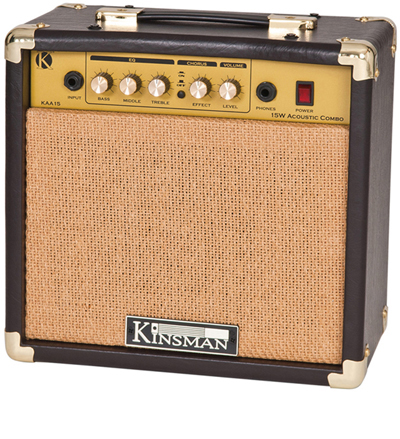
What Sound Do I Need?
Or perhaps we should ask: how many sounds do I need?
While Keith Richards and Ron Wood of the Rolling Stones used many different guitars along with numerous vintage amplifiers and rack systems to produce the (already authentic and unique) rock sound of the Stones, Mick Taylor needed only a LES PAUL, a well-worn FENDER TWIN REVERB (with a second FENDER as a spare), and two small Ibanez pedals: a distortion (probably an IBANEZ TUBESCREAMER) and a chorus, which was heard only once during a more jazz-rock-oriented piece. This doesn’t mean that this setup is ideal for everyone. Most modern guitarists need simply more sounds. Of course, blues guitarists need fewer and more limited sounds in comparison.
Also, not all guitars can cover the sonic needs of a musician. A simple example: if you’re looking for the typical loud country sound, the best LES PAUL wouldn’t be enough. Instead, a (much cheaper) TELECASTER will surely put you on the right track. The construction of a guitar can also affect posture and playing style: on a STRATOCASTER or TELECASTER – with the same string gauge – you need more force than on a Les Paul-type guitar. This is due to the different construction scale and higher string tension, a significant element for the sound of these guitars. Many musicians love to “struggle” with their guitars. Jeff Beck used to say how important the neck thickness of the guitar is in achieving the right tone. Others prefer the comfortable, flat necks of old LES PAULS (e.g., Mick Taylor, Jimmy Page, or Slash).
If you need many sounds, the amplifier should provide them quickly (with the press of a button or via a footswitch). In this case, a vintage tube amplifier would be inappropriate, even if it offers the best crunch sound in the world, unless you’re using effects pedals, but that is another story and perhaps a future article.
To begin with, one must know what they want to achieve. What does a guitarist initially need? Depending on the genre of music they play or want to play, the requirements are more focused. For example, clean tones are more commonly used by jazz or blues musicians than by hard rockers. Of course, this is a very general approach. There are many other possibilities or intermediate forms. No one can (or wants to) prohibit guitarists from making their sound “fly” with a flanger or a LESLIE, and someone like David Gilmour, who may use delays, always has at least one handy. It is certainly good to be clear about what we really want to do and what we need before buying a guitar amplifier or individual components (pedals, multi-effects, pedalboards, etc.).
Amplifiers for Acoustic Instruments
A special category of amplifiers is designed for acoustic instruments such as the acoustic guitar, bouzouki, and others. These amplifiers usually feature more than one speaker to reproduce the sound of the instrument with greater accuracy and quality. They often include a crossover to separate low and mid frequencies from the high frequencies, achieving higher fidelity in sound reproduction. The woofers, responsible for low and mid frequencies, typically have a softer construction compared to electric guitar amplifiers, ensuring high-quality sound amplification.
These amplifiers also often provide depth effects (reverb), essential for softening and enhancing the natural quality of the instrument’s sound. Alternatively, there are self-amplified 2-way monitor speakers that excel in amplifying the sound of acoustic instruments with exceptional quality. These speakers have additional inputs for connecting a microphone or another instrument.
Conclusion
Undoubtedly, some of the most esteemed amplifier manufacturers include Boss with the Katana series, Fender, Supro, Marshall, Peavey, Mesa Boogie, Vox, Line6, Orange, and many others. Each manufacturer brings a unique and recognizable characteristic to their amplifiers, making it challenging to distinguish a particular brand. It all ties back to personal preferences and the style you want to pursue in your guitar playing. Especially crucial, especially for beginners, are the Kinsman, Kustom, and Donner combos, which stand out for their unbeatable combination of quality and price.
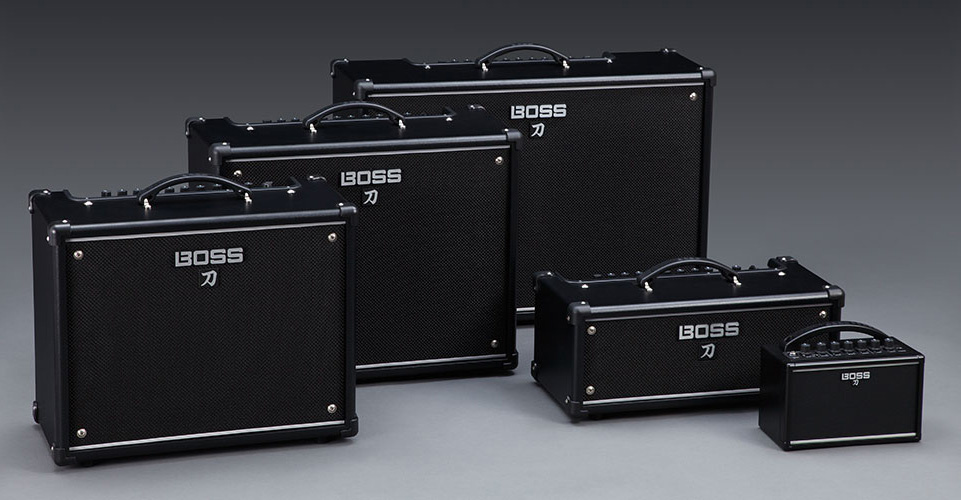
The prices for these products range from approximately 80 to over 3500 euros. The variation in quality, performance, features, and additional characteristics contributes to this price scale. From affordable transistor amplifiers for practice to handcrafted tube amplifiers with numerous effects, there is a wide range available that will satisfy even the most demanding guitarist and help them find their distinctive sound. If you are unsure about which amplifier suits your needs best, the MusicPower team is here to help. A quick email with your question or a chat with our guitar department experts can make a difference!
All products from our online store come with a 14-day return guarantee and a 2-year warranty. You can order a product of your choice, try it out within the mentioned period, and return it if it doesn’t meet your needs or replace it with another product. We are always here for you throughout this process.



